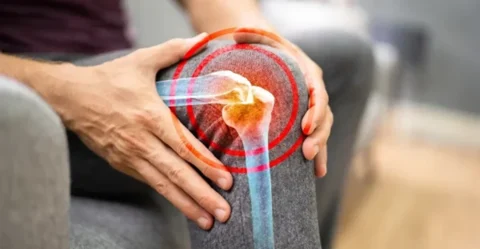Not all esthetic treatments provide the same results. This is why it’s essential for you to discuss your options with a qualified provider before trying any treatment. But you can also go the extra mile and read up on recent research and studies done on esthetic treatments and the science behind them. Take for example platelet-rich plasma (PRP) treatments and how they’re used to stimulate hair growth.
So what does the latest research on PRP treatments suggest about hair growth? Based on several studies, using platelet-rich plasma on hair loss patients can have promising results in terms of treating conditions like pattern baldness and improving hair quality. However, this may not apply to all patients interested in trying out PRP treatments.
What Studies on PRP and Hair Growth Show
Many studies have been done to determine the clinical efficacy of PRP treatments for hair loss. While more studies need to be done on a larger scale and include hair loss patients of both sexes, the results show some promise in the effectiveness of PRP treatment. These are some of the findings of studies done from 2014 to 2019.
PRP Can Help Treat Androgenetic Alopecia
Researchers from India published a study in the Journal of Cutaneous and Aesthetic Surgery in 2014. In this study, they observed that the use of platelet-rich plasma was growing in popularity for treating male and female pattern hair loss (androgenetic alopecia). They wanted to determine the safety, efficacy, and feasibility of PRP’s use for treating androgenic alopecia.
For their experiment, they had 11 male participants with androgenic alopecia undergo PRP injections every 2 weeks for 3 months. They then checked the state of the participants’ hair in comparison to their initial state based on visual observation, macroscopic photos, a hair pull test, and the participant’s findings.
The researchers found that 9 patients had visibly decreased hair loss by the first to fourth injection they received. Each patient only had 3 cubic centimeters of their scalp treated, and the researchers found that the average number of hairs within that area increased.
This study has some limitations. First, it suggests that men with male pattern baldness can benefit from PRP injections, there were no female participants to show that it can also treat female pattern baldness. Another study done one year later and published in the Asian Journal of Transfusion Science conducted a similar test and had 2 female participants, and they had a visible improvement in their hair. However, 2 female participants isn’t a large enough sample size to say for certain that PRP can benefit female patients.
Additionally, the sample size of 11 participants is too small to say for sure that PRP can benefit those with androgenic alopecia. The short duration of the experiment also doesn’t account for the potential long-term benefits of PRP for treating hair loss.
PRP Can Help with Hair Quality
On top of stimulating hair growth, PRP may also have an effect on the hair quality from the treated follicles. In the Journal of Cutaneous and Aesthetic Surgery, participants noticed stronger hair as hair loss decreased during hair pull tests compared to the results prior to receiving PRP treatments. While the study in Asian Journal of Transfusion Science reported that participants noticed their hair was thicker, denser, and stronger.
These studies suggest that PRP’s benefits aren’t just limited to hair growth. While PRP may stimulate hair follicles and regenerate cells that can result in hair growth, this also suggests that it can also affect how other cells and proteins build up at the follicles to create healthier hair growth.
PRP Can Improve the Effects of Minoxidil
Hair loss medication like minoxidil and oral finasteride may work on some patients, but it’s not as effective on others. However, based on some recent studies, it might be beneficial for patients to combine both PRP treatments with medications to see better hair growth.
The first study from the Journal of Cutaneous and Aesthetic Surgery found that all the male participants had tried minoxidil and finasteride for at least 6 months but didn’t see any improvement in their hair. However, as the results show promise in PRP treatments, this might suggest that it can be beneficial for their hair growth if they resume taking medications.
This is backed up by another study published in 2019 in the International Journal of Trichology. In this study, 1 group of male patients were given PRP treatments while another was given minoxidil. After 6 months of treatment, researchers found that patients that got PRP treatments had comparatively better outcomes than those who had minoxidil.
The Results of PRP Treatments Depend on Your Blood Quality
The 2019 study published in the International Journal of Trichology also found that not all patients may benefit from PRP. Researchers found that, among the participants that received PRP treatments, those with a higher platelet concentration had much better results than those with lower platelet counts.
Platelet-rich plasma is autologous and processed from a patient’s own blood. This means that patients with unhealthy blood cells, poor wound healing, or a low concentration of platelets may not have enough platelets in their blood sample to trigger hair growth stimulation. Patients who are taking any medication with blood-thinning effects may not benefit from treatment. And patients who are older – since the average platelet count starts to dip within your 60s – may also not have the blood to deliver visible results.
GET MEDICAL-GRADE BLOOD COLLECTION NEEDLES AT 20% OFF WITH CODE “20OFF” ON YOUR FIRST ORDER.
Stock up on blood collection needles and other medical and aesthetic supplies with FACE Med Store. Checkout today and get 20% off your order.

Why Are Further Studies Needed?
While many of these studies suggest that PRP treatments can be beneficial, there’s still a lot more research that needs to be done. Although there are several studies on the benefits of PRP treatment for hair loss, every study done has several limitations that prevent the results from being widely accepted.
For instance, some studies that focus on androgenetic alopecia only have male participants. This shows that PRP can be beneficial to male pattern baldness, but it doesn’t offer the same insights for female pattern baldness or other types of hair loss. Additionally, the sample sizes may be considered too small to be certain about the results.
Note that all these studies only cover the short-term benefits of PRP treatments and not progressive hair loss over time. This means if a patient stops receiving PRP treatment, it’s unknown if their hair growth and hair quality will remain the same or, similar to hair loss medications, their hair will once again thin out.
Can PRP Treatments Work for Me?
PRP can be administered either by an esthetic professional through injection or combined with microneedling treatments, or through DIY options to combine microneedling with PRP. While most patients with healthy platelet counts may benefit from treatment, the results can vary depending on many factors.
If you’re interested in learning if PRP treatments can benefit your hair loss problem, visit a dermatologist or esthetic provider to discuss PRP treatments or alternative hair loss solutions.
The best candidates for PRP treatments include:
- Patients with male pattern baldness. Studies suggest that PRP injections can help with male pattern baldness. This type of hair loss is caused by an excess of DHT hormone in the body, which can suppress hair growth. PRP can stimulate dormant hair follicles and promote healthy cell repair and hair growth.
- Patients who have undergone hair transplantation. Hair transplants are the surgical option of replacing dormant hair follicles with healthy donor follicular units from the back of your head. PRP injections can complement the effects of your treatment and stimulate the healthy follicular units to produce hair.
- Patients who don’t have bleeding or clotting disorders. This includes patients who are taking blood-thinning medications. If your blood has clotting issues, a low platelet count, or a medical condition that causes your platelets to function differently, the treatments may not be as effective.
- Patients under the age of 50. By the age of 50, androgenic alopecia may already be at a state that PRP treatments may not be enough to stimulate healthy hair growth. Also, by the age of 50, your platelet count may begin to drop by 8%.
To know if you qualify for PRP treatments, see a professional esthetic provider. They can discuss PRP treatments more thoroughly and determine if you can benefit from PRP treatments or if other alternative solutions are more appropriate.
Visit FACE Med Store for Quality Hair Care Needs
There are several studies done that suggest PRP treatments can be beneficial to those experiencing different degrees of hair loss. However, there are some limitations, and we’ll need more studies to know for sure the extent PRP can go to treat dormant hair follicles. To learn more about receiving PRP treatments, schedule an appointment with a professional esthetic provider.
For all your hair care needs and more, visit FACE Med Store today. We offer the best deals that are great for esthetic businesses looking to minimize operational costs without sacrificing on quality, as well as everyday users who want competitive prices on beauty supplies and esthetic products. Check out our online shop today to find great deals on the hair care products you need.
















